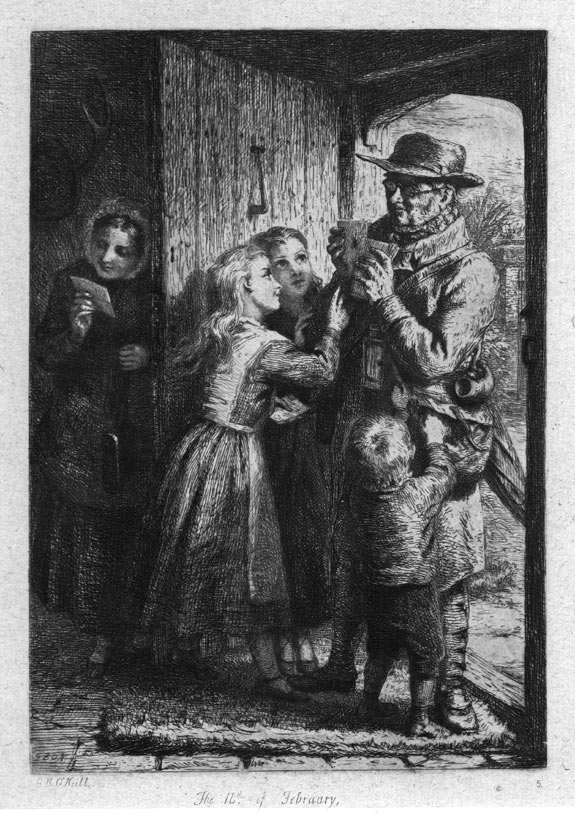|
George
Bernard OíNeill
Dublin 1828 Ė 1917 London
OíNeill settled in London as a child. He entered the Royal Academy Schools in 1845 and exhibited at the R A from 1847,
when he was aged only nineteen. In 1855 he married , Emma Stuart Callcott, a cousin of the artist John Callcott Horsley.
Horsley
was a member of The Etching Club and through
him OíNeill also became a member, as well as joining the Cranbrook artistsí Colony.
The latter were a group of artists settled in Cranbrook in Kent from 1854 on. Inspired by Dutch 17th century painters, they produced romanticised
scenes of domestic life, cooking, washing, children playing and other family activities, equally typical of Victorian narrative genre painting.
OíNeill and his wife leased a medieval timber-frame house about a mile out of Cranbrook in 1860 and maintained it as a summer home and
studio for many years. It was the setting for many of OíNeillís paintings.

The
14th February
177 x 124 mm (image); 204 x 151 mm
(plate)
Original
etching, 1872. The plate initialled. With the title
and the artistís name in the lower plate border, as issued as plate 5 in Etchings
for the Art Union of London by the Etching Club, 1872,
Total edition of 450. On laid india paper. Slight foxing in the margins of the wove support sheet.
£185
|
|
Additional
Information about the Print
OíNeillís etching of The
14th February shows a country postman, with his post horn and post bag, delivering letters which include Valentine cards. A
heart is obvious on the reverse of one envelope,
which the girls are eagerly reaching for.
Printed
Valentines, as opposed to hand-drawn ones, had
been produced from about 1820, encouraged by
the invention of lithography, which allowed cheap
mass printing, but it was only from the 1850ís that they began to proliferate, after the introduction of the penny post.
William
Powell Frith would paint a young woman holding
a valentine card in 1875, three years after the
publication of OíNeillís etching.
[By coincidence, the first printed Christmas card, dating to 1843, was designed by OíNeillís wifeís
cousin John Callcott Horsley.]
|